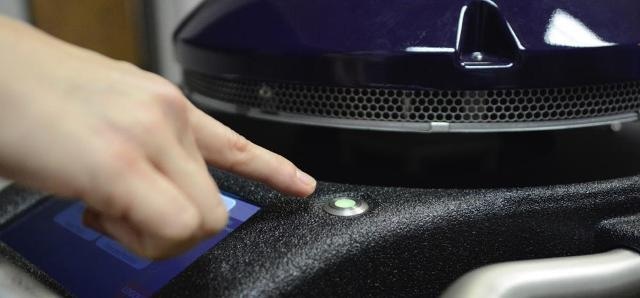May 20 2016
A new army of robotic soldiers is striking back against germs and bacteria at Norton Audubon Hospital. The hospital has invested in three Xenex Germ-Zapping Robots™, a not-so-secret weapon in its fight against hospital-acquired infections caused by pathogens like methicillin-resistant Staph (MRSA) and Clostridium difficile (C. diff). Norton Audubon Hospital is the first healthcare facility in Louisville to deploy the Xenex devices, which have been credited by other hospitals around the U.S. for helping reduce healthcare associated infection (HAI) rates by 50-100 percent.

About 1 in 20 acute care hospital patients get a hospital-acquired infection every day, and nearly 75,000 in the U.S. will die from one each year, according to the Centers for Disease Control and Prevention. In other words, more people die from hospital-acquired infections each year than breast cancer and prostate cancer combined.
One of the simplest ways to prevent many of these infections is by ensuring hospitals are as germ-free as possible. Norton Audubon Hospital has acquired three pulsed xenon Germ-Zapping Robots that can be up to 20 times more effective and 23 percent faster than traditional cleaning. For example, the Xenex robot can kill C. diff spores in 4 minutes. Disinfecting patient rooms following the standard cleaning protocol takes 12 minutes or less.
“Supporting studies show that use of these machines improves the quality of the patient environment and greatly decreases the possibility of these hospital-acquired conditions,” said Kristin Pickerell, R.N., director, quality and clinical effectiveness, Norton Audubon Hospital.
Xenex customers have reported, in peer-reviewed studies posted on Xenex’s website, 70% infection rate reductions for C. diff, 57 percent infection rate reductions for MRSA, and 100%i infection rate reductions for surgical site infections.
How the robots kill
Some microorganisms that cause infection are becoming resistant to standard hospital cleaning practices, which leaves patients vulnerable to infections. C.diff spores can live on surfaces for up to five months. The Xenex Germ-Zapping Robot attacks these superbugs with pulses of Full Spectrum™ high-intensity ultraviolet (UV) light, which is hundreds of times more intense than sunlight. When the light flashes across surfaces in hospital rooms, it destroys lingering viruses, bacteria, fungi or bacterial spores that may be left after a standard cleaning.
The Germ-Zapping Robot can be used in any type of room and does not require warm-up or cool down time. After the room is cleaned by the hospital’s Environmental Services team, the robot is wheeled in and set up, then left alone in the room to get to work zapping the microscopic germs and bacteria that may have been missed by human hands.
Norton Audubon Hospital’s robot army went into active duty on April 11, 2016. Their mission is to be in action around the clock in operating rooms, the intensive care unit and rooms after patients are discharged.
Norton Audubon Hospital is anticipating significant reductions in infection rates and other patient safety improvements within the first year of use.
“The robots are an investment in our patients and another example of how Norton Healthcare continues to strive to find ways to care for our community,” said Jon Cooper, chief administrative officer, Norton Audubon Hospital.
As the Germ-Zapping Robots make their way down the halls, patients, visitors and staff can feel safe knowing they are being protected by this high-tech army.
“We welcome the robots as new team members here to help our patients,” Cooper said.